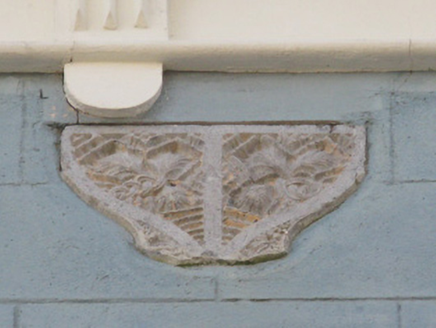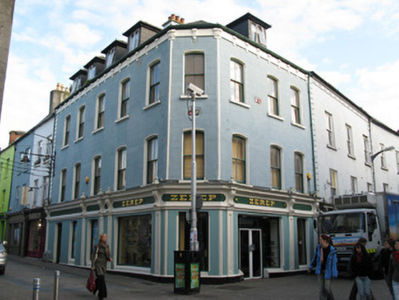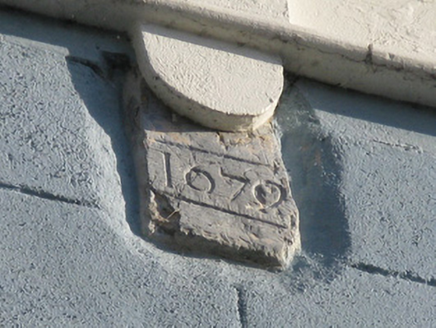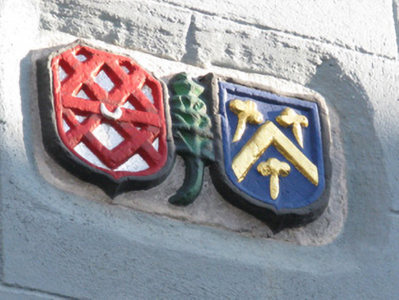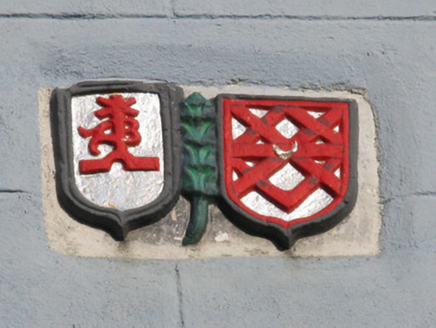Survey Data
Reg No
30314053
Rating
Regional
Categories of Special Interest
Archaeological, Architectural, Artistic
Original Use
House
In Use As
Shop/retail outlet
Date
1575 - 1910
Coordinates
129858, 225261
Date Recorded
04/09/2008
Date Updated
--/--/--
Description
Corner-sited three-storey building with dormer attic, built c. 1600 and rebuilt c.1890, presenting three bays to William Street, five bays to Abbeygate Street Upper and chamfered single bay to corner. Now in use as shop. Hipped slate roof having painted rendered chimneystack and cast-iron rainwater goods. Lined-and-ruled rendered walls having rendered eaves course with ornate scroll brackets. Channelled render quoins to north end of Abbeygate Street Upper elevation, painted rendered plinth, stone to eaves level of corner bay with inscribed date 1679, carved stone family crests between upper floors of corner bay and to top floor of William Street elevation. Possibly re-used carved window spandrel to eaves level of Abbeygate Street Upper elevation. Shopfront to ground floor of both elevations, comprising smooth rendered walls having panelled timber pilasters with capped brackets and timber entablature with raised lettering to frieze and having moulded cornices above and below. Camber-headed window openings to upper floors having bowtell render reveals, stone sills and two-over-two pane timber sliding sash windows. Square-headed window openings to shopfront with moulded chamfered surrounds and sills, and fixed timber display windows. Square-headed door opening to Abbeygate Street Upper elevation having splayed bowtell reveals, timber panelled door and overlight. Square-headed door opening to William Street elevation having replacement glazed doors.
Appraisal
This prominently sited commercial building is distinctive for its large size and chamfered corner. It is given added interest by the quality of its render details, particularly to the eaves, and is enhanced by its timber sash windows set into bowtell-moulded surrounds, and by the classical detailing of the ground floor. Considerable historical and archaeological interest is provided by the various medieval carved limestone details which suggest that the building is substantially late medieval in origin.
